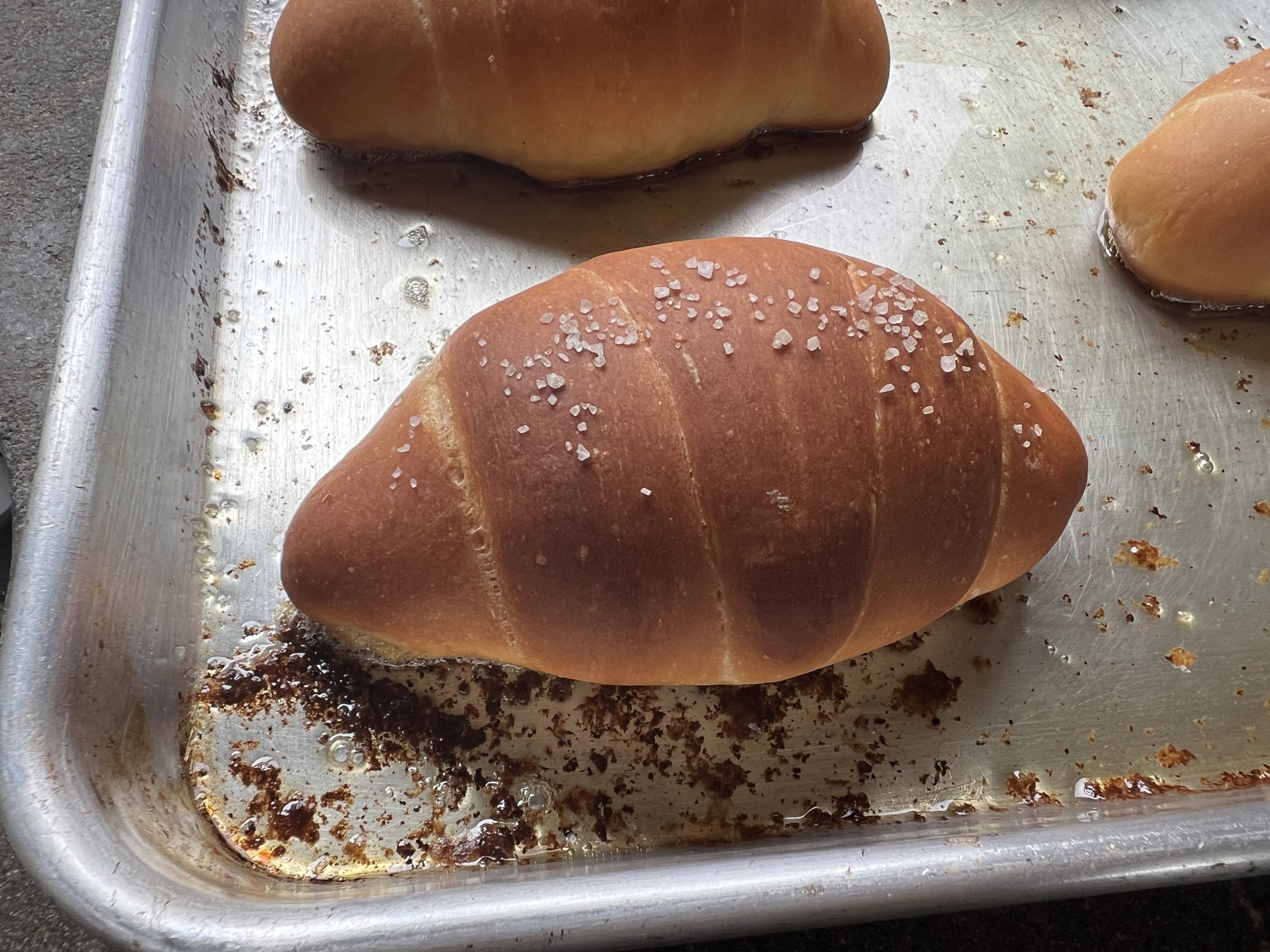Salt Bread
a bread roll that highlights salt and butter to perfection소금빵 (sogeum-ppang) has been super popular in Korea. It’s a salt butter roll that is super simple but beautifully highlights the plain flavors of butter and salt. I had some on my trip to Korea last year and loved them! They’re based on 塩パン (shio-pan) from Japan and are so good fresh. That’s why I wanted to try making them on my own and I’m so glad I did! :D
You can also make these in the stand mixer. They’re a lot easier since you don’t have to knead manually with your hands. But unfortunately, my stand mixer is currently broken so I opted for the hand-kneaded version.
I drew the salted butter variety, but I used unsalted! haha. It’s the grey/silver package :3
Ingredients
I used DuCook’s recipe found here: https://www.youtube.com/watch?v=AbjqzR3nyqU&ab_channel=DuCook%EB%93%80%EC%BF%A1
Ingredients:
400 grams bread flour
100 grams cake flour
30 grams sugar
10 grams (2 teaspoons) salt
6 grams (2 teaspoons) dry active yeast
30 grams milk powder
330 milliliters warm water, 48 degrees C (118.4F)
30 grams unsalted butter, room temperature
180 grams unsalted butter, cold, cut into 15g pieces
Coarse salt
Directions
Combine 400 g bread flour, 100 g cake flour, 30 g sugar, 2 tsp salt, 6 g yeast, and 30 g milk powder in a large bowl. Whisk together.
Add 330 ml warm water. I heat mine to 48 degrees C. Use a spatula to have it come together, then use your hands to knead until it forms a lump. When no more flour is visible, transfer to a work surface and knead the dough, making sure to stretch and push the dough. Around 5 minutes.
Then spread the dough out so that it forms a square and then spread 30 g soft unsalted butter on top. Cover the butter with the dough by folding it over. Then continue kneading the dough again. Twist, stretch and push. Once the butter is fully mixed into the dough, continue working the gluten by throwing the dough against your work surface and folding it over. Keep repeating until enough gluten is formed. You can use the window-pane method by stretching the dough out so that it becomes transparent enough to see your finger. 5-10 minutes. Once the dough is kneaded enough, make sure the dough is nice and taut then transfer to a bowl and cover with either a damp towel or plastic wrap. Let it sit for 90 minutes to rise and double in size.
While the dough rises, cut 190 g cold unsalted butter into 15 g pieces, about the size of a crayon. Place the cut butter in the fridge until you need to use them.
After 90 minutes, your dough should have doubled in size. It shouldn’t shrink when you press into it with your finger. Transfer your dough back to the work surface and shape it into a log. Then divide your dough into twelve 70 g pieces. You will have an extra thirteenth piece. Divide this piece into 12 smaller pieces and add them to the others. Use your hand to then shape the dough pieces into circles by pressing them onto the work surface and making circular motions. Cover the rounds and let them sit for 20 minutes so that they relax and become easier to form.
After 20 minutes, shape your rounds into cones by rolling with your hands one end of the round. Then flatten the thick end of the cone with a rolling pin. Lift the thin end of the cone and flatten this end with the rolling pin as well, elongating it as you roll. It’s important to lift the thin end so that the roll spreads out long. Place your 15 g butter stick onto the wide end of the rolled dough and then cover it. Then continue rolling the dough much like a croissant. Transfer the roll to a baking sheet with the seam side down. Then transfer all the rolls to an enclosed space (I used my oven) to proof and ferment for 50 more minutes. I place it along with a pot of boiling water.
Once fully proofed, spray your rolls with water and sprinkle some coarse salt over them. Then transfer to a 392 degrees F oven to bake for 20 minutes, until golden brown.
Enjoy!
Have you ever seen these at a Korean bakery?





